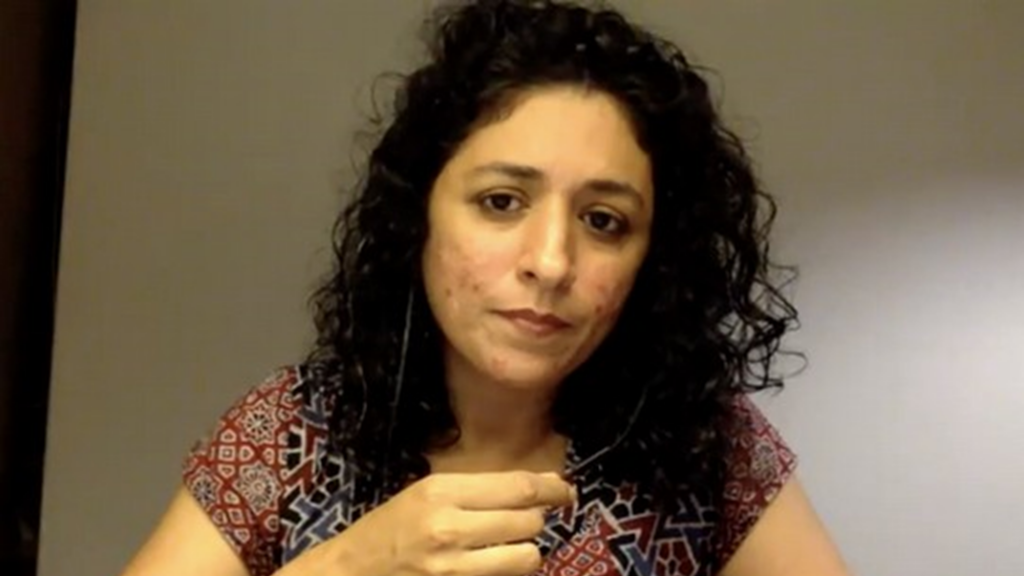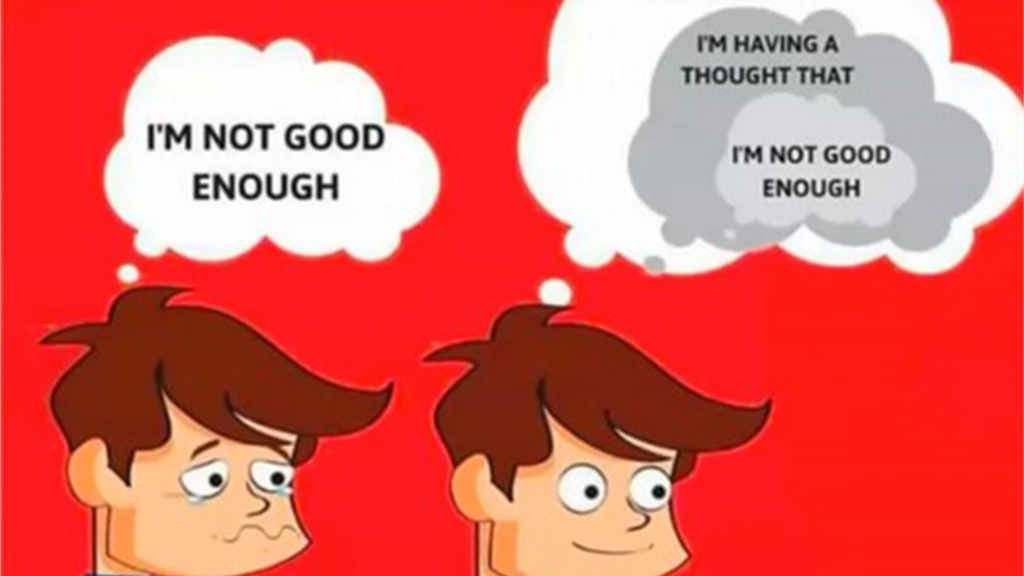Dr Nivedita Challil is a counsellor and Arts based therapist. She is also the founder of Arth, a mental health centre in Mumbai and a teacher of Buddhist psychology. We were fortunate to have an online session with her during the Covid lockdown on the topic ‘How to take care of your Mind’

Dr Nivedita started off the session with a concept known as the Emotion Wheel that displays the whole spectrum of emotions we experience in our lives.
The innermost circle has 6 primary emotions: Fear, Anger, Sadness, Surprise, Joy and Love. Most of us wake up every morning and we would naturally want to be in the Joy space or the Love space. Nobody would like to wake up to be in the Sadness or Fearful space. But what often happens is that while we try to be in the Joy or Love space, the way we go about it is in a manner that aggravates or triggers the other emotions. The wheel starts spinning faster and faster in our heads and we experience mood swings, anger or frustration. If we really want to stay a little stable or stay within the joy or love space (green or yellow zone), we need to control few factors that will allow us to stay there.
These 6 emotions are known as root emotions and each of these emotions have certain nuanced emotions. For instance, if you feel fear, you could be feeling scared, terrified, insecure, nervous or horrified, that is, different degrees or shades of that root emotion. You could also have someone going upto panic, for instance which would be another level or nuance of the secondary emotion of terror. If someone is nervous, they could be feeling the next degree of emotion that would be anxiety or worry. We want to be able to control and move past all of this so that we can reach contentment or more happy or enthusiastic spaces in the emotion wheel. But how does one do that in our stressful lives is the obvious question.

(The wheel of Emotions has been created by Robert Plutchik)
We need to recognise that our minds tend to create its own dramas. For example, when we spend hours on social media, we tend to get stressed if we don’t get enough validation on our posts. We look at happy pictures of friends going to different places, having fun and we feel inferior about how we are leading our own lives. The idea of missing out on what others are doing and not being able to push ourselves to do the same spins our emotion wheel to emotions that are not helpful. Part of the reason we go through these emotions is simply in our mind. We need to be able to learn to control it so that we are moving towards joy.
Nivedita introduced a metaphorical concept from Buddhist psychology – that of a clap. Whenever there is a difficult situation, for example, a loved one is upset and not talking to you, you are suffering in that moment. But when you look at why you are suffering, the first thought that comes to mind is that this person is not speaking to me or they are causing me stress. So our focus is always on the outside – what the other person did or didn’t do, what he said, and so on. These are external factors. But this external factor is not operating in isolation. It is operating in combination with something else. The clap in question does not create the sound on its own. When the external factor meets the internal factor of the mind and what we think we need at a particular time, that’s when we have an emotional response that kicks in. But we have the power to change the internal factor of our mind. We determine how we respond to any situation.
It is not always that the problem may be internal to our mind. There may be multiple external issues that need to be changed, e.g. larger societal issues like domestic violence, rape, abuse, etc. But by and large many other things are a product of our mind.

A wise scholar once said, “Where will we find enough leather to cover the world? Would it not be wiser to cover our own two feet instead?” The idea is that outside problems are infinite. We cannot control all of them. So what can we control? Our own actions and our own emotional responses so that we can be alright in situations that are not in our control.
Whenever there is a situation that is generating an emotional response in you, recognise and watch the first thought coming in your mind. Suppose someone didn’t respond to your message. That is an external factor. But that has met an internal factor, your current mental state, which is the internal factor that is causing you stress. So you need to learn to change your thoughts and responses to that situation to prevent that stress.
While we usually all agree that change should happen, it is not easy to bring that change within ourself.
The idea is to come into a space where we are more self-reflective, where we are thinking about what kind of internal factors are affecting us and what kind of factors repeat in different situations. But we cannot start this exercise by being critical or harsh to ourselves. We cannot look at our thoughts and label them as good or bad. We have to be non judgemental about ourselves. We can classify our thoughts as helpful or not helpful to avoid being judgemental. The more we judge ourselves the more our self reflection is likely to fail. Our goal in identifying and classifying our thoughts is simply to recognise our patterns and to avoid the non helpful thought patterns so that we can eventually reach the goal of being happy. This self reflection has to be done from a position of self-compassion. It has to be done at a time when we are reasonably calm. We should not do it on a day when we are feeling angry or upset.

(The above cartoon is based on a meme created by Brazilian webcomic artist Lut)
When you have an argument with someone and are feeling anger towards that person, you may reach a stage where you learn to control your anger and don’t react. But it may happen that the latent anger may still remain in your mind and it can create a loop of negative thoughts that can eventually turn into an anger outburst at some point that may end up damaging the relationship with that person. To avoid this, we need to replace the thoughts of anger with something positive. Try instead to think of the positive characteristics of that person and how he/she may have helped you in some manner or done good things for you in the past. That will help you to look beyond the feeling of anger.
There is no right or wrong way of self reflection. The goal is to identify the internal factors when they kick in and how to avoid getting into a loop of negative thoughts so that you can steer your mind away from non-helpful thoughts to helpful ones. Those external factors that can be changed, an attempt should be made to change them but those that cannot be changed must not be wrestled with. Instead we need to learn to work to change our own internal factors. And the way to do that is self-reflection and the first step towards self reflection is self compassion.
The idea of compassion is being able to accept ourselves, not because we are super human but because we are alright and we are enough and we can look at ourselves with kindness. Imagine someone you love dearly is in pain and they are limping towards you. Wouldn’t you feel great compassion towards them and want to help them? Why can we have this warm-heartedness to others and not to oneself? We need to bring this compassion to self as part of our daily practice and learn to say “I’m alright”!

We can use mindfulness to distance ourselves from our thoughts that are not helpful. Learn to observe your mind as if you are viewing it from a distance, from a neutral compassionate space. If your mind is getting a thought that you are not good enough, it could become a part of your belief system. But with mindfulness you are observing a mind that is saying it’s not good enough. And there is a world of difference between the two. A belief when entrenched in the mind can have a control over us. With mindfulness, you are able to loosen that control. You are recognising that the mind is saying it is not good enough and that does not necessarily mean it’s true. It is simply a thought that occurred at a vulnerable time. We need to use mindfulness to recognise that we start spewing unhelpful thoughts, start believing them and our wheel of emotion continues to spin. But if we are able to step away from it, we realise that we don’t necessarily have to be caught up in that belief system and there is a way to step out of it.
Highlights from the Q&A session:
Q. How to come out of a breakup to practice self-compassion?
The practice of self compassion and self reflection has to be done when we are calm. But when things are very intense, the mind itself is hurt and is not in a position to heal itself at that time. At such a time, it is recommended to get help from a professional.

Q. Even when we realise that we need to change, the fear of failure causes procrastination. How to overcome that?
Treat your life as a small experiment. Don’t take things too seriously. If you look at your life as an experience in learning more and more, whether you fail or succeed doesn’t matter as long as you have learnt something, improved and had fun along the way. Because we have fixed self beliefs about failure, it feels like a big thing. But failure and success are both transient.
This session gave us a unique insight into Buddhist philosophy and psychology and ways to control the spinning emotion wheel in our minds. Dr Nivedita conducts a more detailed course in applied Buddhist psychology and those willing to know more about it can contact her via Arth, her mental health institute in Mumbai or by contacting Hugging Club of India.
– Written by Amit Rai
– Compiled by Amol More
– Edited and uploaded by Mahrukh
